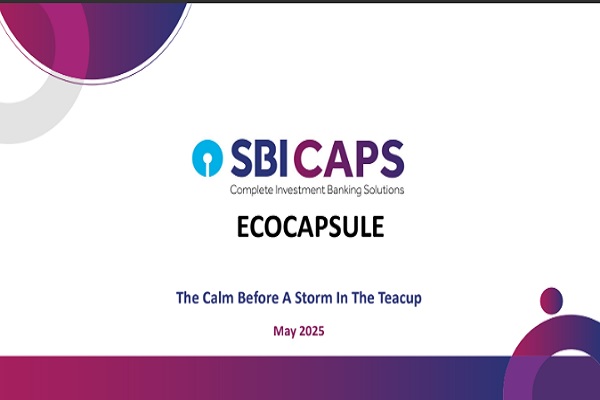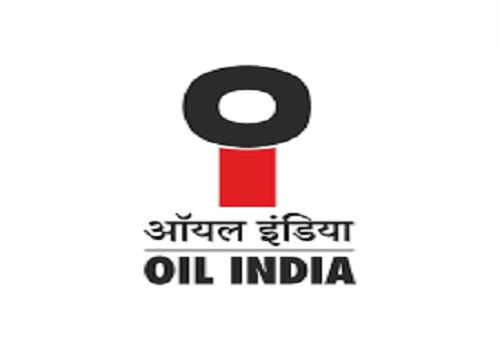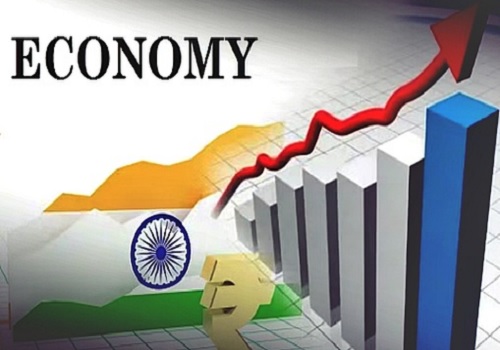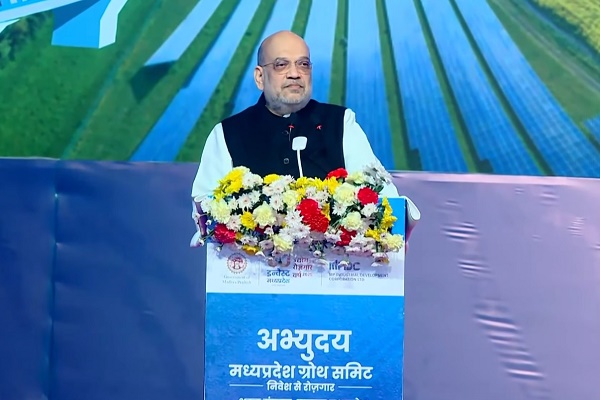SBICAPS EcoCapsule May 25 : The Calm Before A Storm In The Teacup

The sulphuric pitch of ‘Liberation Day’ took the breaths away of the global markets, and the subsequent US announcement of a 90-day pause on tariffs was a much needed breath of oxygen. Since then, the air has cleared further, with delayed auto tariffs and a dovish regulatory shift aiming to reassure markets. These actions, paired with relatively resilient Q1CY25 GDP and payroll data from the US helped the S&P 500 rebound to early Apr’25 levels, tempering near-term volatility.
Yet, paradoxically, this extended state of limbo may prove more damaging than a swift correction. A sharp policy shock, while painful, would at least have forced repricing and clarified the path forward. Instead, markets now float in suspended animation — a slow bleed that clots corporate strategy, hinders supply chain recalibration, and narrows investment horizons.
This uncertainty is tightening financial conditions. Liquidity is increasingly under pressure, with elevated geopolitical risks, shifting rate expectations, and erratic policy signalling narrowing funding channels — especially across primary equity markets. The private credit and equity landscape is being tested by weaker exit opportunities, shrinking deal pipelines, and rising risk premia. In this environment, selectivity and discipline will define future vintages, not capital velocity.
Further complicating the backdrop are sharp currency swings, driven as much by external imbalances and USD volatility as by domestic flows. For emerging markets, this continues to distort monetary independence and intensify capital allocation risks.
In contrast to global fragility, India remains relatively well-insulated, supported by its inward-oriented economy, declining crude prices, and a proactive monetary policy stance. While global shocks persist, the real GDP impact for FY26 is expected to be minimal — around 0.2-0.5pp — with nominal GDP growth likely to hover around 9% y/y, buoyed by subdued inflation and a solid base.
India’s strategic positioning may yield further benefits. It is reportedly close to becoming one of the first countries to finalise a trade deal with the US, with terms of reference already in place. While some concessions — including a rare ‘forward most-favoured nation’ clause — are on the table, expected clarity on over 90% of the 12,000 open tariff lines and exemptions for labour-intensive sectors could significantly improve export and investment certainty.
On the domestic front, the RBI has been swift and assertive, cutting rates twice in anticipation of moderating inflation and lower global commodity prices. An additional 50–75 bps of easing remains likely. Meanwhile, liquidity conditions have turned decisively positive, with OMOs purchases in YTDCY25 at an all-time high, ensuring effective policy transmission.
However, as ever, liquidity remains a facilitator — not a growth driver in itself. When overstretched, it risks fuelling asset mispricing and bubbles. The challenge now lies with the government and industry to capitalise on these favourable conditions and drive productive investment. Early signals, however, remain mixed. The NSO’s capex intent survey paints a cautious picture, with FY26 private capex intentions at Rs. 4.9 trn, down 26% from FY25 — a stark reflection of prevailing uncertainty.
Ergo, while the worst-case scenarios have been postponed, the underlying fragility remains. The narrative has shifted from panic to patience, but the risks — especially around liquidity, private capital deployment, and currency dislocations — continue to bubble beneath the surface.
Above views are of the author and not of the website kindly read disclaimer






















